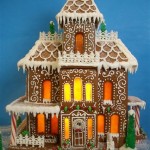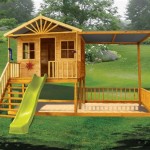Garden Plants for the North Side of Your House
When choosing plants for the north side of your house, it's important to consider the amount of sunlight they will receive. The north side of a house typically receives less sunlight than the other sides, so it's important to choose plants that can tolerate shade. Here are a few things to keep in mind when choosing shade-tolerant plants for your garden:
Consider the amount of sunlight your garden receives. The north side of a house typically receives less sunlight than the other sides, so it's important to choose plants that can tolerate shade. Some plants that do well in shady conditions include hostas, ferns, and impatiens.
Choose plants that are the right size for your garden. You don't want to choose plants that are too large or too small for your garden. If you have a small garden, choose plants that are compact and don't take up too much space. If you have a large garden, you can choose larger plants that will fill in the space. Consider the color of your plants. The color of your plants can have a big impact on the overall look of your garden. If you want a bright and cheerful garden, choose plants with bright flowers. If you prefer a more subdued look, choose plants with muted colors. Don't forget to add some variety to your garden. Don't just plant one type of plant in your garden. Instead, mix and match different types of plants to create a more interesting and visually appealing space. You can plant flowers, shrubs, trees, and even vegetables in your garden. Water your plants regularly. Even though shade-tolerant plants don't need as much sunlight as other plants, they still need to be watered regularly. Water your plants deeply and infrequently, rather than shallowly and often. This will help to encourage deep root growth. Fertilize your plants. Shade-tolerant plants don't need as much fertilizer as other plants, but they still need to be fertilized occasionally. Fertilize your plants according to the manufacturer's instructions. Mulch your plants. Mulching your plants will help to retain moisture and suppress weeds. Spread a layer of mulch around your plants, but be sure to keep it away from the stems. Protect your plants from pests and diseases. Keep an eye on your plants for pests and diseases. If you see any problems, treat them immediately. You can find more information about pests and diseases at your local garden center. Enjoy your garden! Gardening is a great way to relax and enjoy the outdoors. Take some time to enjoy your garden and all the beauty it has to offer.
What Are Good Shrubs For A Home S North Side Black Gold

A Fresh Approach To Foundation Plantings Finegardening

North Facing Garden

North Facing Garden

Shade Gardens Ideas Design Inspiration Garden

25 Best Plants For Shade 2024 Flowers That Grow In

North Side Shade Garden Project On Craftsy Com Plants That Like
.jpg?strip=all)
Choosing Plants Based On Garden Orientation Essential Tips
.jpg?strip=all)
Choosing Plants Based On Garden Orientation Essential Tips

North Facing Window Plants 15 Choices For Northern Exposure








